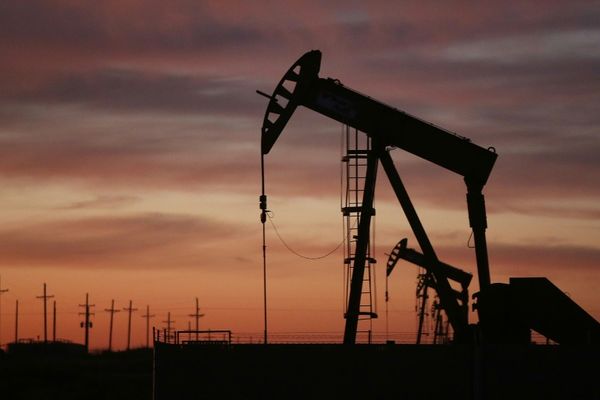Middle East oil fears continue with U.S. oil prices hovered above $72 per barrel Thursday as protests in Libya this week shut down production at two key facilities. Additionally, concerns once again rose that Israel's retaliation against Hamas could broaden and trigger U.S. sanctions against Iranian oil.
At the same time, Houston-based international oil producer APA announced it would pay $4.5 billion for Permian Basin producer Callon Petroleum. The deal between the S&P 500 listed APA and Russell 2000 component CPE marked another step in the oil industry's recent, significant shift toward safer U.S.-based fossil fuel assets.
U.S. crude futures advanced early before falling to about $72.40 per barrel on Thursday — off December lows, but still mired deep in doubts that demand will recover in the months ahead. Protests in Libya and geopolitical tensions in the Middle East have lifted oil off recent lows, raising fears of possible supply disruptions.
What Do The Exxon Mobil And Chevron Deals Say About The Oil Industry's Future?
Oil prices jumped more than 3% Wednesday as protesters in Libya halted output from the country's Sharara and El-Feel fields, which produce around 365,000 barrels per day.
APA stock plunged 7.4% while Callon stock advanced 2.9% Thursday during market action.
Middle East Oil: The APA-Callon Deal
APA reported Thursday the deal is an all-stock transaction valued at approximately $4.5 billion. The international oil producer said the deal will boost its operations in the Permian Basin, where Callon has nearly 120,000 acres.
While APA said the deal's total figure was inclusive of Callon's net debt, the company also announced it is also expecting to retire Callon's existing debt. It plans to replace it with APA term loan facilities totaling $2 billion. JPMorgan Chase Bank, Citigroup Global Markets and Wells Fargo are providing $2 billion of financing for the deal.
APA's long-term debt stood at $5.45 billion at the end of 2022, according to federal filings. Meanwhile, the company's debt-to-equity ratio weighs in at 216%. For comparison, ConocoPhillips has a debt-to-equity ratio of 34%, Occidental Petroleum 65% while Hess comes in at 108%, according to MarketSmith.
APA Looks To U.S. Production
APA is also boosting its domestic production with the acquisition. In 2022, 53% of APA production was in the U.S. with 37% in Egypt and 14% in the North Sea. After the Callon acquisition, U.S. production will be closer to 67%, with overseas production falling to well below 50%.
Third Bridge analyst Peter McNally noted to investors Thursday that APA is choosing not to forecast activity plans in the Permian Basin until after the deal is closed.
What Does 2024 Hold For The Energy Industry and The Permian Basin?
"Investors are likely to have questions around how APA plans to prioritize asset development in Egypt and Suriname," McNally said.
"Egypt has been an established production area for APA for years, although growth has proved to be elusive. Suriname is one of the more exciting exploration developments in global oil as it sits adjacent to the massive discoveries by Exxon Mobil and Hess in Guyana," the analyst wrote.
Please follow Kit Norton on X, formerly known as Twitter, @KitNorton for more coverage.
YOU MAY ALSO LIKE:
Futures Rise After Further Market Losses; This Stock Clears Buy Point
Is Tesla Stock A Buy Or A Sell?
Learning How To Pick Great Stocks? Read Investor's Corner
Is Rivian A Buy Right Now After The Cybertruck Delivery Event?










